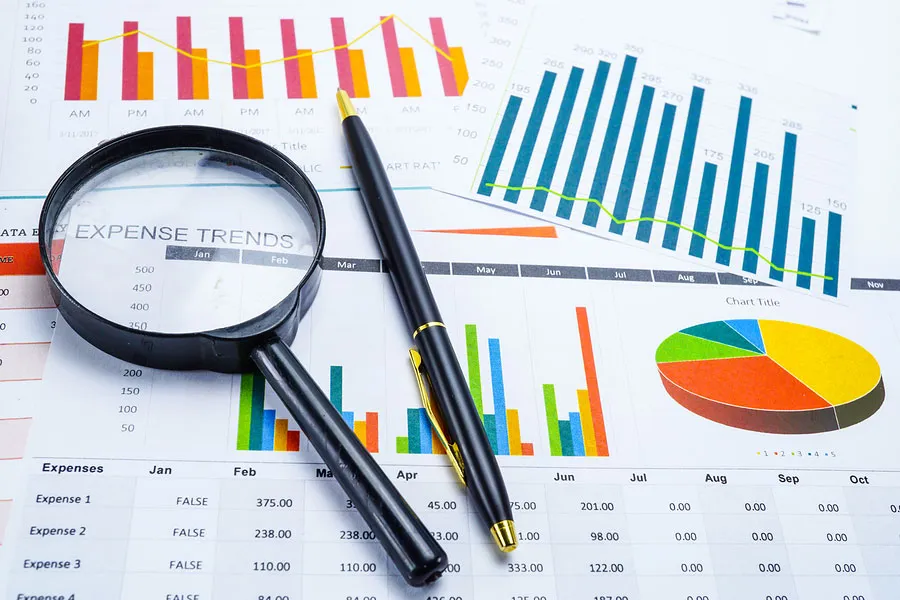
When looking into a business’s performance, the best way to obtain an overview of its current position is through the financial statements.
However, it may prove difficult to compare the performance of 1 business to another with just the financial statement figures, especially when there is a difference in size.
This is where financial indicators come in handy. By comparing financial figures relative to each other in the financial statements, you can get financial indicators that are unaffected by the size of the business. In this blog, we shall cover indicators that can tell you about the credit situation in a business: debtor days & creditor days.

Debtor Days
When a business allows customers to purchase on credit, it is very important for the business to actually receive that money in a timely matter. While businesses themselves likely track the debtor's ageing, for people outside of the business we likely don’t have access to this information. That is where debtor days calculation can come in handy.
Debtor Days is calculated as trade receivables outstanding at year end divided by credit sales and multiplied by 365 days (Trade Receivables÷Credit Sales×365 days).
You may simplify this to Debtors÷Revenue×365 days if the business only sells on credit & the business does not have other debtors.
This metric allows you to obtain a rough idea of how long the business takes to receive their money from their trade debtors. Here’s and example to illustrate the use of this formula:
A business ended their financial year with RM230k trade receivables. From their sales breakdown, they showed RM3.4mil credit sales out of their RM4mil sales. Using these figures, we can calculate their debtor days as follows:
Debtor days=Trade Receivables÷Credit Sales×365 days
=230k÷3.4mil×365 days
=0.0676×365 days=24.67 days
Therefore, we can conclude that the business’s customers repay the business, on average, 24-25 days after credit sales take place.
Creditor Days

When purchasing goods or services for the business’s own trade, the suppliers may provide credit, allowing the business to pay at a later date.
While this delays the cash outflow from purchases, the business will have to keep track of their repayment to avoid late payments penalty.
For people outside the business, we could use creditor days to obtain a rough outline of the business’s repayment policy.
Creditor Days are calculated as trade payable outstanding at year-end divided by credit purchases and multiplied by 365 days (Trade Payable÷Credit Purchases×365 days).
You may simplify this to Creditors÷Purchases×365 days if the business only purchases on credit & the business does not have other creditors.
We will extend the example above to illustrate the application of this formula:
The business also has RM180k trade payable at the financial year-end. They only purchased on credit during the year, amounting to RM2.1mil during the year. We can calculate creditor days as follows:
Creditor days=Trade Payable÷Credit Purchases×365 days
=180k÷2.1mil×365 days
=0.0857×365 days=31.28 days
We can conclude that the business is paying its suppliers, on average, 31-32 days after purchasing from them. Considering the debtor days calculated earlier, we notice that the business collects money from its customers faster than it pays its suppliers.
Coupled with the large revenue relative to purchases (4mil to 2.1mil), this suggests that the business has a healthy cash flow, but more information on the business’s other expenses & activities is required to draw a proper conclusion.
Conclusion
Debtor & creditor days are very useful metrics even for management as an overview of the overall trade credit situation. This is sometimes more appropriate for performance evaluation. The ability to cross-reference these metrics to approximate the cash flow situation of the business is also very helpful.
However, these metrics only provide an overall average of collection & payment situations and are unable to account for outliers such as long outstanding debts.
Nonetheless, learning about these financial indicators is still important even for the layman to better understand the business world. Be sure to look for our next blog covering more financial indicators!
Disclaimer
All content provided on this blog is for informational purposes only. The owner of this blog makes no representations as to the accuracy or completeness of any information on this site or found by following any link on this site.
The owner will not be liable for any errors or omissions in this information nor for the availability of this information. The owner will not be liable for any losses, injuries, or damages from the display or use of this information.
References
Creditor & Debtor Days: https://www.cbsnews.com/news/assessing-creditor-and-debtor-days/

